gergely
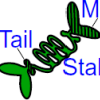 Recent work has shown that the C-terminal tail is particularly important to kinesin-5 motor function and mitotic spindle assembly. We characterized a series of kinesin-5/Cut7 tail truncation alleles in fission yeast. Our observations suggest that the C-terminal tail of Cut7p contributes to both sliding force and midzone localization.
Recent work has shown that the C-terminal tail is particularly important to kinesin-5 motor function and mitotic spindle assembly. We characterized a series of kinesin-5/Cut7 tail truncation alleles in fission yeast. Our observations suggest that the C-terminal tail of Cut7p contributes to both sliding force and midzone localization. We describe the Toolkit for Automated Microtubule Tracking (TAMiT), which automatically detects, optimizes, and tracks fluorescent microtubules in living yeast cells with sub-pixel accuracy. TAMiT detects linear and curved polymers using a geometrical scanning technique.
We describe the Toolkit for Automated Microtubule Tracking (TAMiT), which automatically detects, optimizes, and tracks fluorescent microtubules in living yeast cells with sub-pixel accuracy. TAMiT detects linear and curved polymers using a geometrical scanning technique.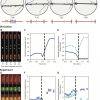 Our paper "Mechanisms of chromosome biorientation and bipolar spindle assembly analyzed by computational modeling" was published in the Feb 13, 2020 edition of eLife today.
Our paper "Mechanisms of chromosome biorientation and bipolar spindle assembly analyzed by computational modeling" was published in the Feb 13, 2020 edition of eLife today.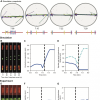 Our paper "Mechanisms of chromosome biorientation and bipolar spindle assembly analyzed by computational modeling" was posted on the bioRxiv server.
Our paper "Mechanisms of chromosome biorientation and bipolar spindle assembly analyzed by computational modeling" was posted on the bioRxiv server.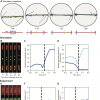 We develop a computational model of fission-yeast mitosis using a course-grained Brownian Dynamic framework in conjunction with a force-dependent kinetic Monte Carlo algorithm to replicate the biorientation and segregation of chromosomes.
We develop a computational model of fission-yeast mitosis using a course-grained Brownian Dynamic framework in conjunction with a force-dependent kinetic Monte Carlo algorithm to replicate the biorientation and segregation of chromosomes. Zach Gergely's poster at the Rocky Mountain Yeast Meeting received a poster award. Congratulations!
Zach Gergely's poster at the Rocky Mountain Yeast Meeting received a poster award. Congratulations! Two members of the group presented posters at the American Society for Cell Biology/EMBO 2017 meeting. Chris Edelmaier's poster was titled "Minimal ingredients for coupled spindle assembly and chromosome bi-orientation in a computational model of
Two members of the group presented posters at the American Society for Cell Biology/EMBO 2017 meeting. Chris Edelmaier's poster was titled "Minimal ingredients for coupled spindle assembly and chromosome bi-orientation in a computational model of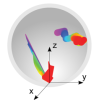 Our paper "Contributions of microtubule dynamic instability and rotational diffusion to kinetochore capture" was published in final form today by the Biophysical Journal and highlighted on the Biophysical Journal website.
Our paper "Contributions of microtubule dynamic instability and rotational diffusion to kinetochore capture" was published in final form today by the Biophysical Journal and highlighted on the Biophysical Journal website.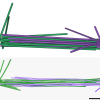 Robert Blackwell's paper "Physical determinants of bipolar mitotic spindle assembly and stability in fission yeast" was published by Science Advances.
Robert Blackwell's paper "Physical determinants of bipolar mitotic spindle assembly and stability in fission yeast" was published by Science Advances.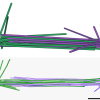 Microtubules, motors, and cross-linkers are important for bipolarity, but the mechanisms necessary and sufficient for spindle assembly remain unknown. We describe a physical model that exhibits de novo bipolar spindle formation.
Microtubules, motors, and cross-linkers are important for bipolarity, but the mechanisms necessary and sufficient for spindle assembly remain unknown. We describe a physical model that exhibits de novo bipolar spindle formation.

